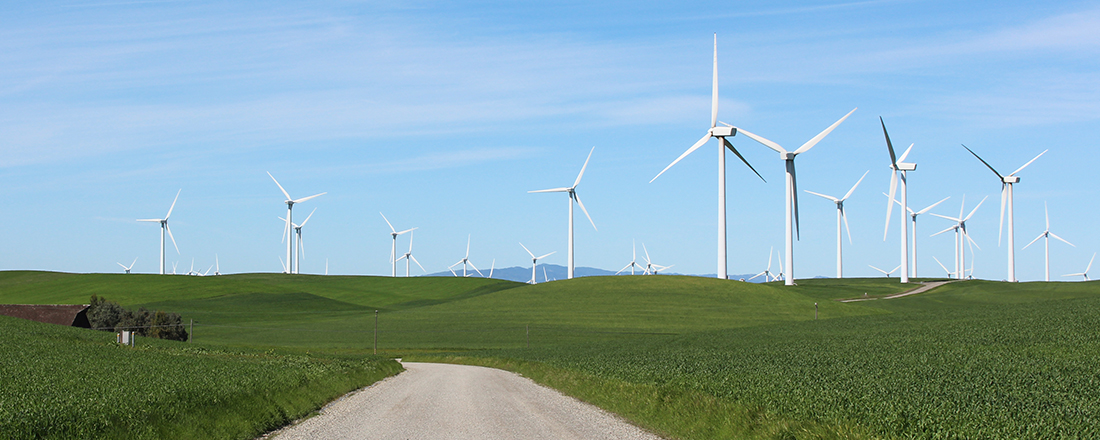Since MCE began serving customers in 2010, we have made bold and consistent efforts to increase access to clean energy services and technologies that support California’s energy and capacity needs. Our standard energy product, Light Green, is on track to be 95% carbon-free by 2022. MCE is also committed to supplying 50% of our Resource Adequacy (RA) portfolio with nonfossil resources by 2030. Clean RA is important because it helps reduce the State’s reliance on fossil fuels as the primary means to ensure a reliable grid, particularly when clean generation supply is limited.
What Is Resource Adequacy and Why Do We Need It?
Every electricity supplier in California is required to have or extra reserve capacity available in case more electricity is needed on the grid than is forecast. This reserve capacity is usually referred to as “resource adequacy” by regulators and energy industry suppliers. The rules that govern this reserve capacity were created by the California Public Utilities Commission (CPUC) in response to the energy crisis of the late 1990s. Electricity suppliers like MCE must demonstrate that they’re purchasing enough capacity to cover at least 115% of the expected peak electricity load to ensure grid reliability and energy availability.
Traditionally, reserve capacity requirements have been met by gas plants. While these facilities have a fuel source that can be called upon to produce power as needed, they can take up to an hour or more to come online, are emissions-intensive, and not very energy efficient. MCE is committed to finding other ways to reliably offer clean energy resources that can provide quick-ramp up and ramp down reliability attributes but are less carbon and emissions intensive.
MCE’s Wellhead Project
MCE’s Wellhead project is leading the way in the transition to clean reserve capacity. In 2019 MCE entered into an 11-year RA agreement with Wellhead Power Exchange for 48 megawatts of monthly capacity. Although currently operating as a traditional gas-fired facility, this project will transition to a hybridized technology that pairs natural gas with a lithium-ion battery, reducing GHG emissions up to 60%, and reducing water usage while increasing overall facility efficiency and responsiveness. The battery can allow the plant to respond instantaneously to any needs on the grid, without having to come on-line unless there is a persistent need.
This facility is in the Fresno Local Capacity Area in California that registers some of the poorest air quality in the state. The MCE Wellhead Project will provide clean energy capacity to the region, reducing the need for fossil-fuel generation, GHG emissions, and the associated air pollution.
Looking Ahead: Future Projects
On April 6, 2020, MCE issued our first Clean Resource Adequacy Request for Offer (RFO) for suppliers offering creative and nontraditional technologies, such as hydrogen-fueled generation, green hydrogen fuel cells, and renewable natural gas technologies. MCE is currently evaluating the various technologies with emphasis on pairing renewable projects with innovative technologies while continuing to reduce GHG emissions, increase grid reliability, and further develop community resources to support economic growth and clean energy jobs.
Additionally, in October 2020, MCE issued a joint Long-Duration Storage RFO with seven other community choice programs, seeking up to 500 megawatts of storage able to provide full energy capability to the grid for an 8-hour duration; currently 4-hour duration batteries make up the bulk of battery energy storage procurement. This collective RFO was issued in response to the CPUC’s comments on the need for longer-duration storage options by 2026 and represents the largest single procurement effort in California for long-duration energy storage. Storing excess renewable energy and dispatching it when needed will increase the flexibility of the grid and reduce the need for fossil generation.
Taking Action
In addition to the projects we’re already exploring, MCE’s annual Integrated Resources Plan has committed to procuring 585 megawatts of storage capacity by 2030, with 300 megawatts of this capacity expected to be paired with renewable energy projects. This commitment will allow MCE to take greater advantage of renewable energy by storing excess solar during the day and dispatching it to the grid when energy is needed, displacing outdated fossil fuel generation.
As part of the California Clean Resource Adequacy Coalition, MCE cosigned a letter to Chris Holden, Chair of the Assembly Utilities and Energy Committee, in October of 2020. This letter outlined several immediate steps for state regulators to increase the clean resources supporting grid reliability. These steps would increase grid resiliency and reliability by providing regulatory support for procurement of clean energy resources including batteries, behind-the-meter storage, demand response, and renewable hybrid resource technologies.
Lastly, in 2020, MCE became a North American Energy Standards Board-registered purchasing and selling entity and an official importer of record, making it easier to import clean energy from out of state.
MCE is committed to creating a cleaner energy future for all. Our commitment to clean RA innovation demonstrates our focus on new technologies and developing innovative and creative solutions to further reduce energy-related GHG emissions.






